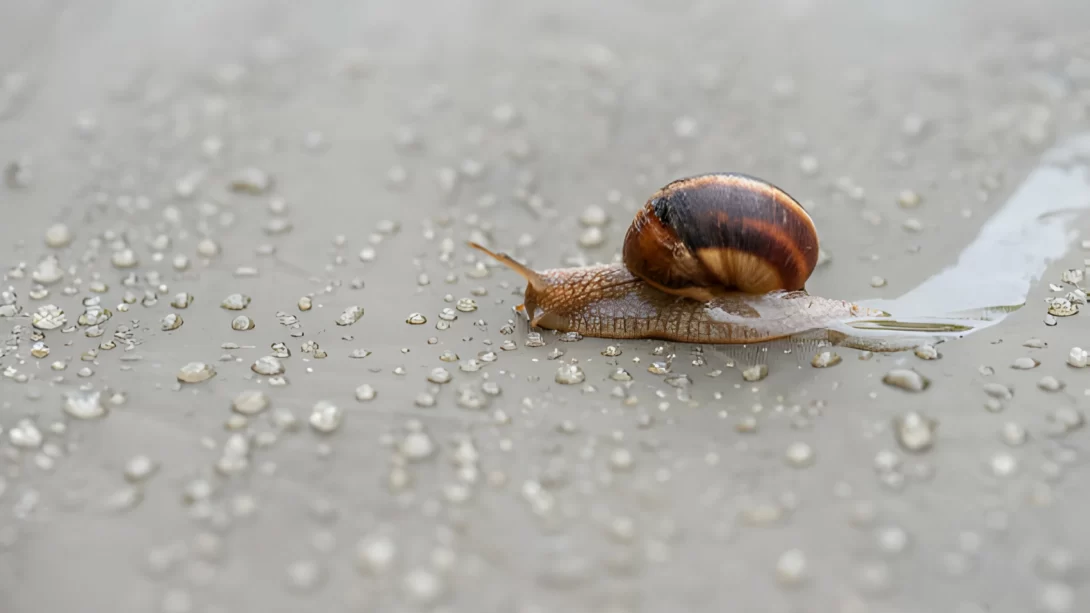A common misconception surrounds the resilience of snails in watery environments. Given their frequent presence in moist habitats, it’s often assumed that snails are impervious to drowning. However, the reality of a snail’s ability to survive in water is more nuanced and depends on various factors, including the species and environmental conditions. This article
explores the intriguing question of whether snails can drown, delving into their biology and the different circumstances that can lead to such an occurrence.
Snail Basics: Their Biology
Snails, part of the mollusk family, have a diverse range of species, broadly categorized into terrestrial and aquatic types. Their anatomy includes a muscular foot for movement and a mantle that houses internal organs, but it’s their respiratory system that’s particularly relevant here. Terrestrial snails typically breathe through a lung-like structure, while many aquatic snails have gills. This difference in respiratory anatomy is crucial in understanding their survival in water. Terrestrial snails, accustomed to air-breathing, can face challenges in prolonged submerged conditions, whereas aquatic snails are adapted to life in water but still require specific conditions to thrive.
The Concept of Drowning in Snails
Drowning in snails refers to the inability to access the necessary respiratory medium – air for terrestrial snails and oxygen-rich water for aquatic snails. For terrestrial snails, drowning can occur if they are unable to reach the surface for air. Conversely, aquatic snails can drown if the water they inhabit lacks sufficient oxygen, a scenario that might seem counter
intuitive given their aquatic nature. Both scenarios highlight that while snails are adapted to either land or water, they have specific respiratory needs that must be met to survive. Understanding these needs is key to providing a safe environment for snails, whether in nature or captivity.
Factors Contributing to Snail Drowning
Several factors can increase the risk of drowning for snails, and these vary depending on whether the snail is terrestrial or aquatic. For terrestrial snails, the primary risk is prolonged submersion in water. These snails need to surface regularly to breathe, and if trapped underwater, they can drown. Aquatic snails, on the other hand, depend on oxygenated water to breathe through their gills. Poor water conditions, such as stagnant water with low oxygen levels, can be fatal. Additionally, water temperature plays a crucial role; warmer water holds less oxygen, which can be detrimental to aquatic snails. The presence of pollutants or chemicals in the water can also affect the oxygen availability, further complicating the survival of aquatic snails.
Signs of a Drowning Snail
Identifying a snail in distress or one that has drowned requires close observation. In terrestrial snails, a lack of movement and a body that remains withdrawn into the shell for extended periods can indicate distress. For aquatic snails, signs of drowning include floating on the water’s surface, an inability to attach to surfaces, or remaining motionless at the bottom of the tank. It’s important to regularly monitor the behavior and physical condition of snails, as these signs can sometimes be subtle.
Preventing Snail Drowning
Preventing drowning involves creating and maintaining a suitable environment for the specific type of snail. For terrestrial snails, ensuring their habitat has areas that are moist but not submerged in water is key. Providing hiding places and surfaces above water can help them regulate their moisture needs without the risk of drowning. For aquatic snails, maintaining the water quality is essential. Regular water changes, proper filtration, and monitoring water parameters like oxygen levels, temperature, and pH are crucial steps. Additionally, avoiding overstocking the tank can help maintain adequate oxygen levels for all aquatic inhabitants.
What to Do If a Snail Is Drowning
In the event that you find a snail drowning or in distress, immediate action can be crucial for its survival. For a terrestrial snail, gently remove it from the water and place it in a dry, safe area with access to moisture. Avoid handling the snail excessively, as this can cause additional stress. For aquatic snails, assess the water conditions immediately. Check and adjust the water oxygenation, temperature, and cleanliness. If necessary, move the snail to a separate container with appropriately conditioned water to allow for recovery. It’s important to act swiftly but calmly to create an environment where the snail can recover at its own pace.
Long-term Care and Recovery
After a drowning incident, both terrestrial and aquatic snails may require a period of recovery. Monitor the snail’s behavior and health closely in the days following the incident. For aquatic snails, continue to test water parameters regularly and make adjustments as needed. For terrestrial snails, ensure their habitat has the right balance of moisture and dry areas. In both cases, minimizing stress by providing a stable, quiet environment is beneficial for recovery. If you’re concerned about the snail’s health, consulting with a veterinarian or an expert in snail care can provide additional guidance.
Conclusion
Understanding the specific needs of snails is crucial in preventing drowning incidents. Whether terrestrial or aquatic, snails require specific environmental conditions to thrive. Regular monitoring, appropriate habitat maintenance, and a keen eye for signs of distress are key responsibilities for snail caretakers. By acknowledging the unique needs of these fascinating creatures, enthusiasts can ensure their health and well-being, avoiding the risks associated with drowning. Responsible pet ownership and a commitment to providing a safe, healthy environment are essential in the world of snail care.



